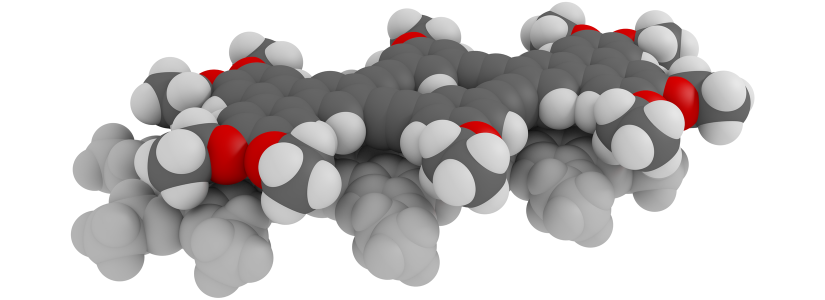Our group uses tools from organic synthesis, physical organic chemistry, and materials science. We have two main interests. First, we seek to design, construct, and study relatively large (nanoscale) organic molecules with properties relevant to electronics, molecular recognition, and catalysis. Second, we explore emergent behavior in reaction networks.
We are particularly interested in compounds that exhibit unusual conformational behavior, self-assembly into more-complex architectures, or functional electronic structures, and those that only exist away from equilibrium. Typically, the molecules we target are synthetically challenging, often because of the very structural features we hope to exploit. Consequently, much of our time is spent on synthetic chemistry. However, every compound we target is chosen for functional properties which we then characterize by various spectroscopies and other techniques. Further characterization of our materials is done in collaboration with other groups at Miami and elsewhere.
Although the methods we employ vary by project, all students in the group get extensive training in organic synthesis, including the execution of oxygen- and moisture-sensitive reactions, and structure elucidation by spectroscopy (e.g., NMR). Our group also studies chemical kinetics with various methods and makes use of computational chemistry and many materials characterization techniques.
ortho-Phenylenes
The focus of this project is the development of ortho-phenylenes as a new and unusual class of conjugated oligomers. These compounds, just chains of aromatic rings connected through the ortho positions, represent a fundamental class of polyphenylenes but have received very little attention.
Our work on the ortho-phenylenes has principally focused on the folding behavior of short oligomers. We have been using a method based on the combination of NMR spectroscopy and DFT calculations. We developed a model that semi-quantitatively explains the folding of ortho-phenylenes. On the basis of this model, we have shown that substituent effects on aromatic stacking interactions can be used to give o-phenylenes with essentially perfect folding (as judged by NMR spectroscopy).
More recently, we have begun taking advantage of the nice features of ortho-phenylenes to construct compounds of increased complexity with multiple folded subunits.
Dissipative covalent chemistry
One of the defining features of biological chemical systems is that they are typically not at equilibrium, dissipating energy to their environments. It is clear from nature’s example that these sorts of systems offer functions and complexity that cannot be achieved otherwise. The design of abiotic nonequilibrium chemical systems that follow this example is, however, in its infancy.
We are interested in identifying chemical fuels that can be used to “power” out-of-equilibrium covalent bond formation: that is, compounds that would behave by analogy with ATP in biochemistry. The formation of temporary bonds offers a simple framework to think about designing out-of-equilibrium assemblies and chemically fueled “molecular machines”. We are currently focusing on the use of carbodiimides (common reagents) to generate transient carboxylic acid anhydrides. We have applied this chemistry to systems ranging from polymer materials to supramolecular hosts.

